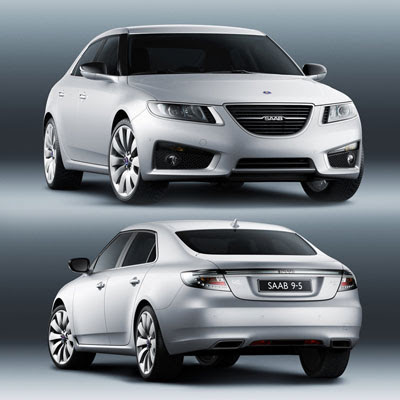Three years into Project 92, a company site in Trollhättan was converted to allow automobile assembly and the project moved there. The company has remained headquartered there since.
In 1949, Saab was ready to bring the car to market, and the Saab 92 went into production, selling 20,000 examples through the mid-1950s.
 In 1969, Saab merged with the Swedish commercial vehicle manufacturer Scania-Vabis AB to form Saab-Scania AB.
In 1969, Saab merged with the Swedish commercial vehicle manufacturer Scania-Vabis AB to form Saab-Scania AB.The 99 range was expanded in 1973 with the addition of a combi coupe model, a body style which quickly became synonymous with Saab. Owing to its great success, the millionth Saab was produced in 1976.
Saab entered into an agreement with Fiat in 1978 to sell a rebadged Lancia Delta as the Saab 600 and jointly develop a new platform. The agreement yielded 1985's Saab 9000, sister to the Alfa Romeo 164, Fiat Croma and Lancia Thema; all rode atop a common Type Four chassis. The 9000 was Saab's first proper luxury car.
1997 marked Saab's 50th anniversary as an automaker. The company used their jubilee owner's convention to launch a replacement for the aging 9000: the Saab 9-5. The 900 received a facelift and renaming complimentary to its new larger sibling: it would now be called the Saab 9-3. The 9-5 was the first Saab without a combi coupe bodystyle option in twenty years. Filling that space was a wagon variant, introduced in 1999.
 Safety has a high priority in the design of Saab cars. The cars are subjected to the Älgtest (elk test) as elk are a common cause of accidents in Sweden. Saab have compiled a database containing over 6,100 real-life accidents with Saabs. The first recorded event was in 1948 where Julian Shermis had an accident.
Safety has a high priority in the design of Saab cars. The cars are subjected to the Älgtest (elk test) as elk are a common cause of accidents in Sweden. Saab have compiled a database containing over 6,100 real-life accidents with Saabs. The first recorded event was in 1948 where Julian Shermis had an accident.All modern Saabs (except the 9000 and 9-2X) have a floor-mounted ignition. This is for many reasons, some of which follow:[citation needed] Saab believes this is a safer position in case of an accident. The driver's knee often jerks upward in a collision; the compact and dense ignition module on the steering column of many other cars has shattered many kneecaps. Saabs have bolstered dashboards for both front seat occupants. Also, the floor-mounted position yields more space, allowing modern Saabs to have a metal bar that rotates over and up into the ignition when the key is turned to the "Lock" position. This makes Saabs very challenging to hotwire. Ergonomically, the ignition's location next to the parking brake lever, gearshift, and seatbelt, saves time. Last of all, the ignition is located on the floor because, in the aircraft that inspired Saab automobiles, the throttle controls were all located on the floor. Originally Saabs also had the key located on the right side of the steering column, but when they changed from a column shifter to a floor shifter, the ignition key followed along, except in the Sonett III and 9000.
 Dating back to 1937, Svenska Aeroplan AB (SAAB) created airplanes, introducing their first car, the Saab 92001, in 1947. Currently, Saab AB is separate from Saab Automobile (which is owned by Swedish Automobile, formerly Spyker Cars), and is probably best known for its Saab 37 Viggen (the Viggen badge would be shared by a 9-3). This has led to a ad campaign, "Born From Jets", evoking the days when Saab produced both aircraft and automobiles. Saab is imported into many countries. Each company has a president to the subsidiary or importer. In the case of the U.S., the first president was Mr. R. Millet.
Dating back to 1937, Svenska Aeroplan AB (SAAB) created airplanes, introducing their first car, the Saab 92001, in 1947. Currently, Saab AB is separate from Saab Automobile (which is owned by Swedish Automobile, formerly Spyker Cars), and is probably best known for its Saab 37 Viggen (the Viggen badge would be shared by a 9-3). This has led to a ad campaign, "Born From Jets", evoking the days when Saab produced both aircraft and automobiles. Saab is imported into many countries. Each company has a president to the subsidiary or importer. In the case of the U.S., the first president was Mr. R. Millet.In 1987, Saab created a TV advertisement called "Saab suite" (subtitled Ballet in 3 acts for 8 Saab 9000 Turbos). In the film, stunt drivers show incredible driving with stock cars, such as one-wheeled burnouts, bumper-to-bumper driving through a slalom, cars slaloming from opposite directions on the same course, two-wheel driving, sliding in full speed, and jumping over passing cars—all on a closed airport runway with classical music playing in the background. Click Here to view the video.
No comments:
Post a Comment